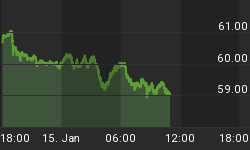The very erudite Dr. John Hussman is as good as a market researcher as there is, and he defines a set of market conditions that when they come together generally leads to poor equity performance. One of Hussman's syndromes is the "overbought, over-bullish, overvalued, and rising yields syndrome."
My own research would agree this assessment. The markets tend not to do well when yields are rising and when investor sentiment is overly bullish. These constructs have formed the basis of some of my most basic and robust trading models, and this combination of excessive investor bullishness and rising yields is at the core of my "Will Robinson" signal. Will Robinson was the young boy on the 1960's TV show, "Lost in Space", and when he was in danger, his robot friend would exclaim, "Danger, Will Robinson, danger!" So when I see this constellations of market findings, it is usually danger ahead for the equity markets.
So what does this have to do with the current market environment? From this perspective very little as I currently don't find these conditions in the current market environment. Over the past couple of weeks, bullish sentiment (and market "over-boughtness") has been unwinding slowly, and as my bond trading is positive (i.e., lower yields), I am not expecting yield pressures to be a factor. Valuations, as measured by the Shiller 10 year P/E ratio or cyclical adjusted PE ratio, remains lofty, yet truth be told, valuations are a poor market timing tool anyways.
But while Hussman is "right" about the "overbought, over-bullish, overvalued, and rising yields syndrome" and market weakness, the opposite set of conditions is probably a market positive. The current market environment shows more bulls than bears (but necessarily extreme) and falling yield pressures. Historically, this combination of factors has been associated with some of the more memorable price runs in recent market history. For example from March, 1995 to February, 1996 under similar conditions, the SP500 gained approximately 30%. There was a repeat from May, 1997 to May, 1998 when the SP500 gained 34%. This set of conditions were also seen at the 2003 market bottom, and the late 2006 through 2007 blow off market top. Needless to say, it does take bulls to make a bull market, and by the way, it does help to have falling interest rates. So maybe this is why investors are currently all lathered up.
But I would contend that you need to be careful for what you wish for as something has happened to the relationship between bonds and stocks over the past 2 years. In 2010 and 2011, falling bond yields have not been beneficial to equities. Rather, falling bond yields, as measured by bullish signals from our bond model, have been a sign of economic weakness, and have led to crushing (i.e., poor) returns in the equity markets. When bond yields were falling and when investors were more bullish than bearish, the SP500 had two draw downs exceeding nearly 15%. From the 1970s to the late 1990s it was rare (< 5% occurrence on 70 unique instances) for such market conditions to even have a draw down greater than 6%.
I suspect investors remember those good old days from the 1990s when the Federal Reserve had the luxury to put the pedal to the metal and keep rates low despite extreme investor enthusiasm and market overvaluations. They don't have that luxury now, and the only reason for the Fed to continue act in such a fashion is economic weakness. Our bond model is currently positive suggesting lower yields. While investors want to hark back to the "good old days", I don't think that is the correct interpretation. I believe this signal suggests economic weakness as it did in 2010 and 2011. This time is different as lower bond yields won't see a blast off in equity prices.
















